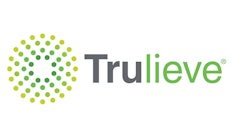CHICAGO--(BUSINESS WIRE)--PRESS RELEASE--Cresco Labs, one of the largest vertically integrated multistate cannabis operators in the United States, has announced that the company served 3,145 people on New Year’s Day at its five Sunnyside* Dispensaries located in Lakeview, Elmwood Park, Champaign, Buffalo Grove and Rockford, Illinois. Sunnyside* also sold 9,258 cannabis products, including Cresco’s house of brands and items from other Illinois suppliers, with an average ticket price totaling $135.
Customers began to form lines outside Sunnyside* locations as early as 8 p.m. on New Year’s Eve, and lines wrapped around the buildings throughout the day as recreational customers showed their excitement to be part of this historic day. The dispensaries opened at 6 a.m. to immediately start serving recreational customers, with the first sale in the state of Illinois taking place shortly thereafter at Sunnyside* Lakeview. Jacqueline Ryan from Forest Park was the first customer to purchase adult-use cannabis, followed by siblings Elise and Aaron Swopes, two participants in Cresco’s Chicago incubator program, which is part of the company’s SEED (Social Equity and Educational Development) initiative, and Illinois Lt. Gov. Juliana Stratton, who played a critical role in shaping the state’s cannabis legislation.
“We’re ecstatic for our Sunnyside* dispensaries to begin serving recreational customers on such a historic day that launches a new era of cannabis and the development of an industry that will bring greater justice, social equity and business ownership opportunities throughout the state,” said Charlie Bachtell, Cresco Labs CEO and co-founder. “With 13 million residents and 100 million annual tourists, Illinois is predicted to be one of the largest recreational cannabis markets in the United States. Cresco is uniquely positioned in the supply-constrained state, with permission for the largest cultivation footprint at 630,000 square feet and ten retail dispensaries, including three in high traffic areas in the city of Chicago.”
Joe Caltabiano, Cresco Labs President and Co-Founder, added, “We’re thrilled to be part of this historic day and to witness firsthand so much excitement from people on the first day of legal cannabis sales. Our dispensaries served thousands of customers on day one by educating new cannabis consumers, making product recommendations and making sure they had a seamless shopping experience. With five newly re-concepted Sunnyside* locations and an additional five dispensaries opening soon in high profile locations such as one next to Wrigley Field and two in Chicago’s downtown Central District, we expect to serve thousands more customers in response to strong demand. Our Sunnyside* concept is designed to move traffic efficiently, so despite the fact that long lines will likely continue in the first few days of adult-use legalization, we are positioned to ensure that each of our customers gets only the best possible service and the products they are looking for. Cresco is already the leader in Illinois, and we expect to be able to maintain this leadership position as the recreational cannabis market grows, contributing solidly to our overall revenue and our profitability.”
























